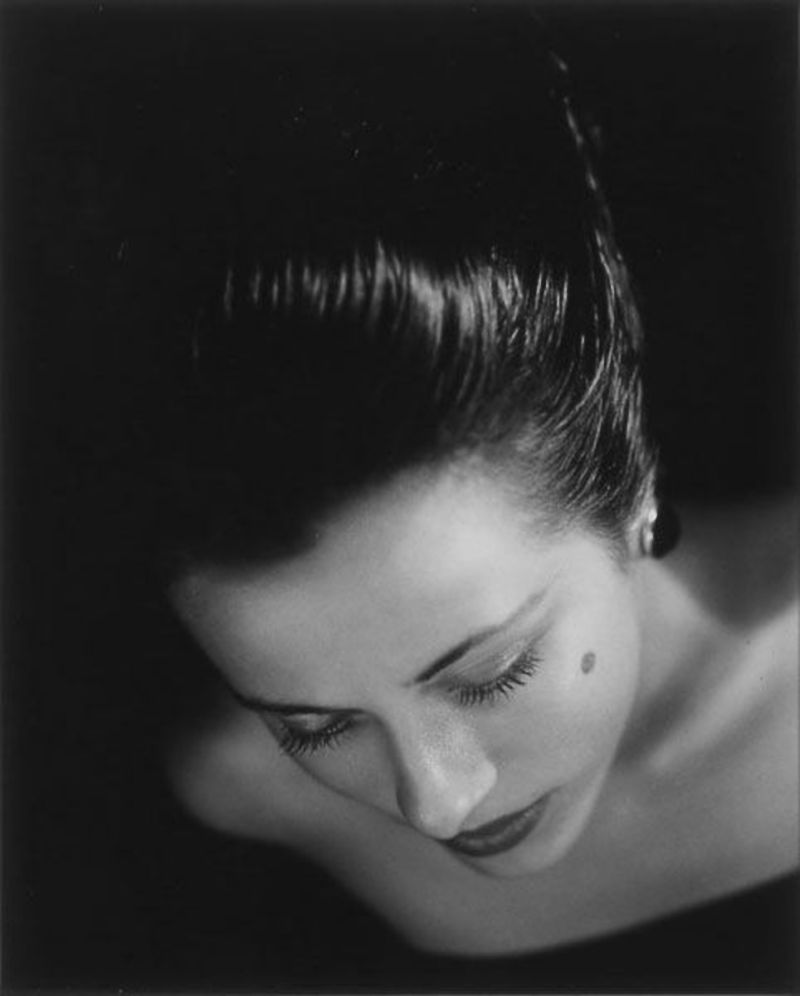Iwata Nakayama
中山 岩太
Iwata Nakayama, 1926
Iwata Nakayama (中山 岩太) fue un destacado fotógrafo japonés nacido en 1895 en Yanagawa, Fukuoka.
Su padre fue un inventor que registró la patente de un extiguidor de incendios. Iwata se mudó a Tokyo y fue educado en la escuela privada Kyohoku-Chūgakkō. Después de graduarse entró a la Universidad de Artes de Tokyo como el primer estudiante en su curso de fotografía. Tras aprender técnicas artísticas y comerciales, se mudó a los Estados Unidos en 1918 para estudiar en la Universidad Estatal de California, enviado por el gobierno japonés. Sin embargo dejó los estudios y comenzó a trabajar en el estudio de Tōyō Kikuchi (菊池東陽) en New York. Gracias a sus habilidades prácticas estableció su propio estudio, el Estudio Laquan en New York.
"Mujer de pelo largo / Woman with Long Hair", 1933
Fotografía publicada en Koga / Photo published in Koga, 1933
"Retrato, la bailarina Komori Toshi / Portrait , The dancer, Komori Toshi", 1927
Nakayama tuvo éxito y viajó por Europa con su esposa Masako (正子) y su hijo Iwao (巖). Es estableción en París y conoció a Man Ray y László Moholy-Nagy y su obra, aunque según escribió no siguió su estilo. Regresó con su familia a Japón en 1927.
Comenzó a trabajar como fotógrafo profesional en Kobe y condujo la vanguardia japonesa de foto arte. Se asoció al Ashiya Camera Kurabu (芦屋カメラクラブ) y educó a algunos principiantes. Publicó algunos de sus trabajos en revistas como Asahi Camera y Nihon Shashin Nenkan (日本写真年鑑). Además hizo uno de los primeros montajes fotográficos comerciales en 1930.
Fotografía publicada en Koga / Photo published in Koga, 1933
Fotografía publicada en Koga / Photo published in Koga, 1933
Portada de Koga / Cover of Koga Vol.2, Nº1, 1933
"Desnudo / Nude", 1932
En 1932 él, Yasuzō Nojima y Nobuo Ina comenzaron a publicar la revista mensual Kōga (光画). Esta revista representó un punto de inflexión en la fotografía artística japonesa. Nakayama fue pionero de la fotografía de vanguardia en Japón y con su obra inspiró a muchos fotógrafos japoneses.
Durante la Segunda Guerra Mundial no pudo trabajar a tiempo completo. Sus obras e volvieron más y más abstractas. Finalizada la guerra, retomó su trabajo profesional creando nuevas piezas artísticas, pero en 1949 murió súbitamente. Sucedió tan sólo unos pocos días después de haber sido seleccionado como administrador de la Asociación de Fotografía del Japón.
"Mariposa / Butterfly", 1941
"Autorretrato / Self-Portrait", 1931
Iwata Nakayama (中山 岩太), was a renowned Japanese photographer born in 1895 in Yanagawa, in Fukuoka.
His father was an inventor who held a patent of a fire extinguisher. Iwata moved to Tokyo and was educated in a private school Kyohoku-Chūgakkō. After graduating from that school, he entered Tokyo University of the Arts as a first student of its photography course. After learning artistic and commercial techniques there, he moved to the U.S. in 1918 as an overseas student of California State University, sent by Japan government. However he quit studying and began to work at a photo studio run by Tōyō Kikuchi (菊池東陽) in New York. With his practical skills, he established his own studio, Laquan Studio, in New York.
"Sin título / Untitled", 1933
"Mujer de Shanghai / Woman from Shanghai", 1936
"Composición (Desnudo y copa), fotomontaje / Composition (Nude and Glass), photomontage", 1935
Nakayama succeeded as an artisan, and traveled around Europe with his wife Masako (正子) and his son Iwao (巖). He stayed in Paris and he came to know Man Ray and László Moholy-Nagy and their works (but he wrote that he didn't follow their style). And he and his family went back to Japan in 1927.
He began to work as a professional photographer in Kobe and drove Japanese Avant-garde Photo Arts. He associated Ashiya Camera Kurabu (芦屋カメラクラブ) and educated some his juniors. And released some works in the magazines Asahi Camera, Nihon Shashin Nenkan (日本写真年鑑) and so on. Furthermore, he made one of the first commercial montage photography in 1930.
"Nioûta-In’nyoka", 1924
Fotografía publicada en Koga / Photo published in Koga, 1933
Fotografía publicada en Koga / Photo published in Koga, 1933
Fotografía publicada en Koga / Photo published in Koga, 1933
In 1932, he, Yasuzō Nojima and Nobuo Ina published their monthly magazine Kōga (光画). This magazine was a critical turning point of Japanese artistic photography. Nakayama was a pioneer of Japanese avant-garde photography and inspired many Japanese photographers through his those works.
During World War II, he couldn't work to the full. His works became more and more abstract. The War over, he resumed his professional work and creating new artistic pieces, but in 1949, he suddenly died (at 54). It was just a few days after he was selected as a trustee of the Japanese Photography Association.
"Autorretrato / Self-Portrait", 1933
Información biográfica tomada de / Biographic information fromWikipedia
Fotografías de diversos sitios de Internet. Portada de Koga de aquí./
Photos from several Internet sites. Koga cover from here.



,+1927.jpg)








,+photomontage+,+1935.jpg)
,+1924.jpg)




